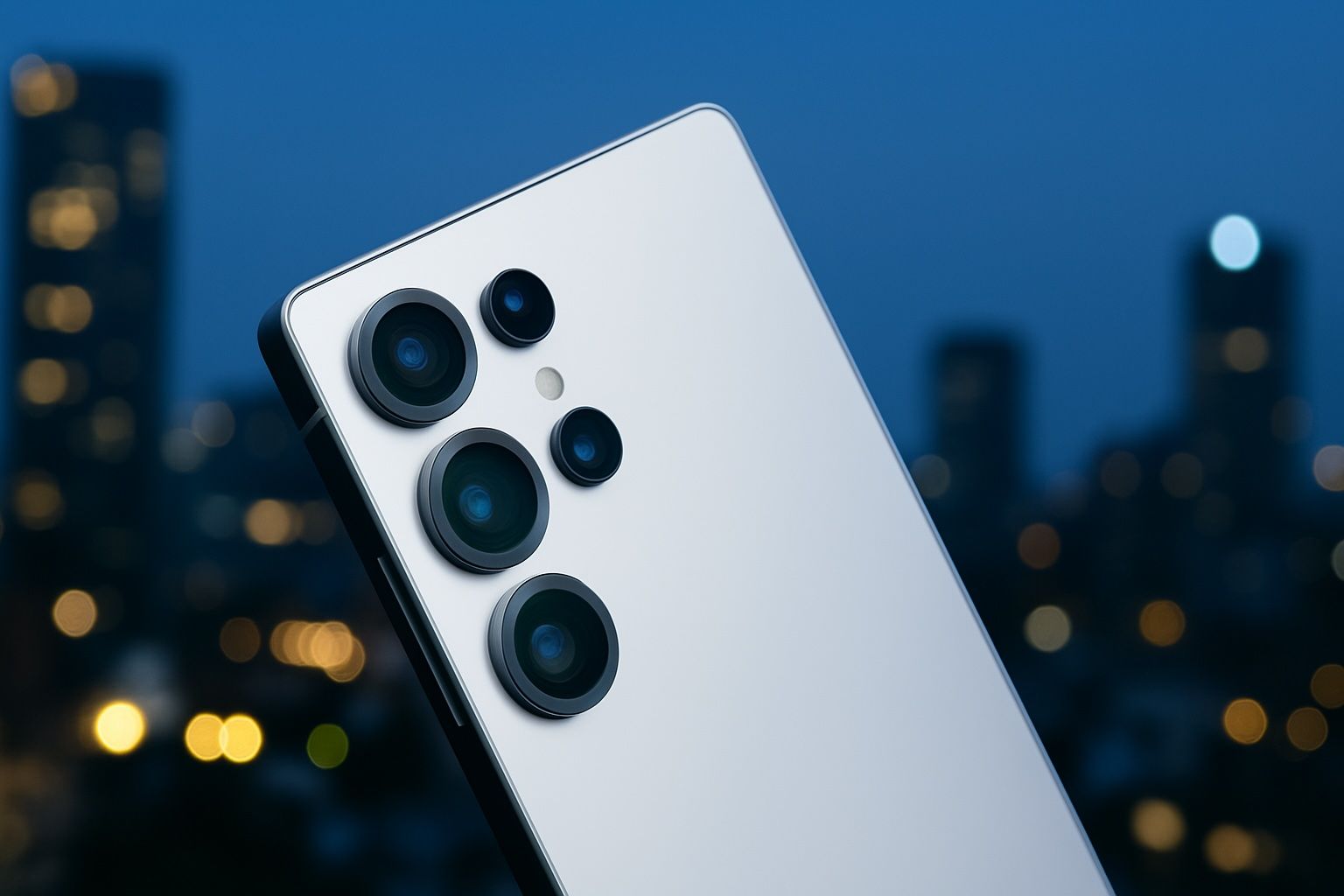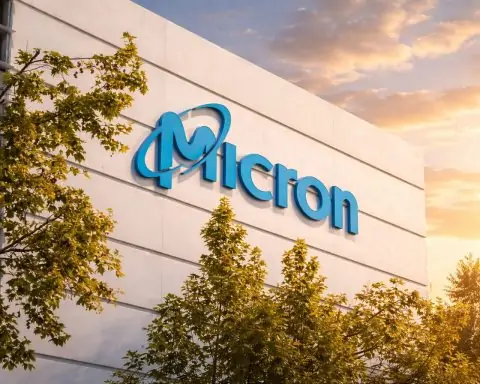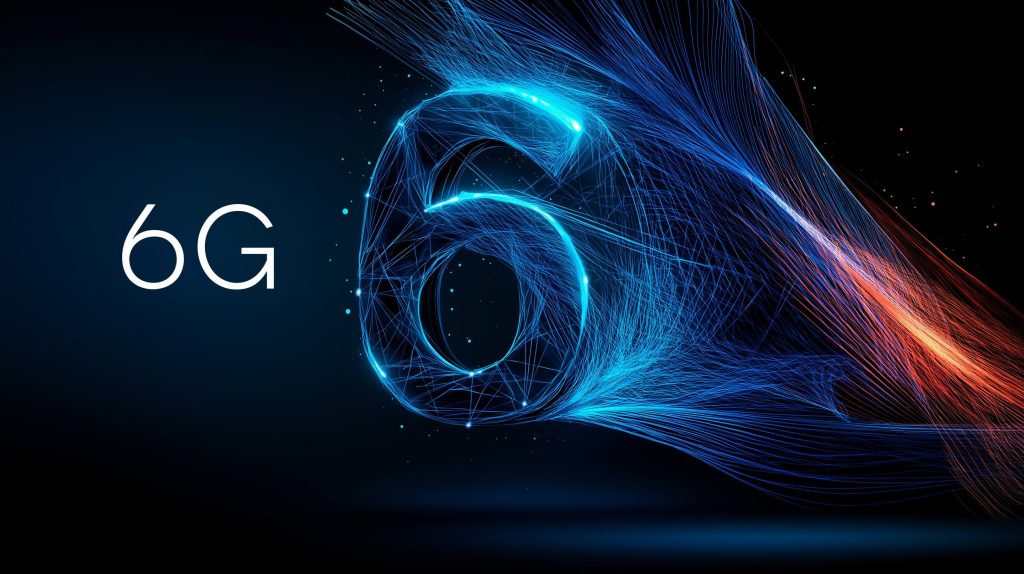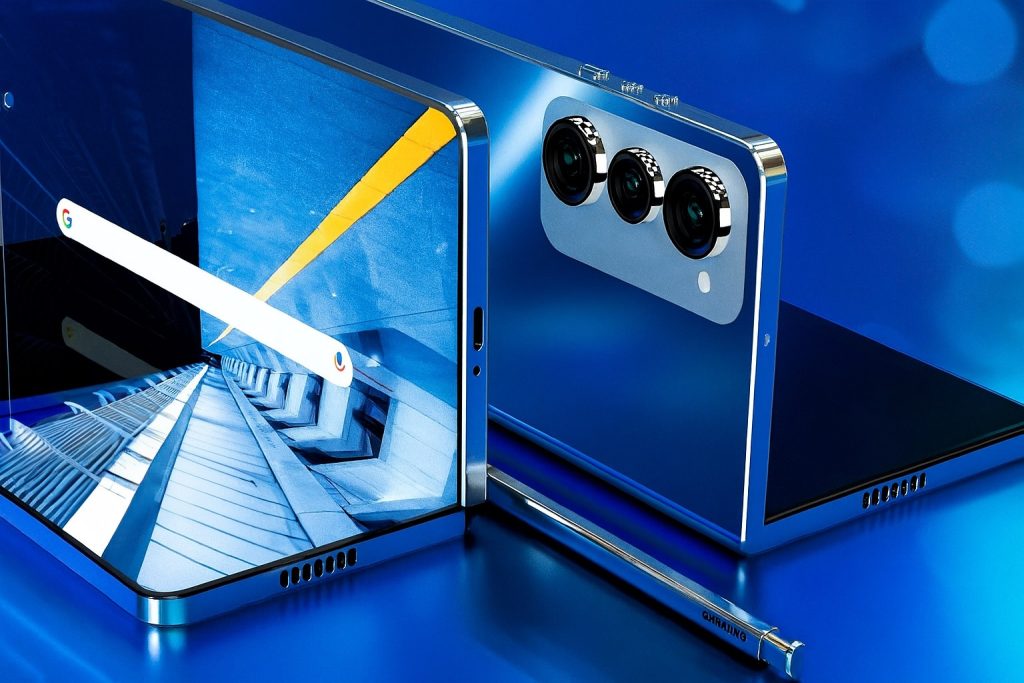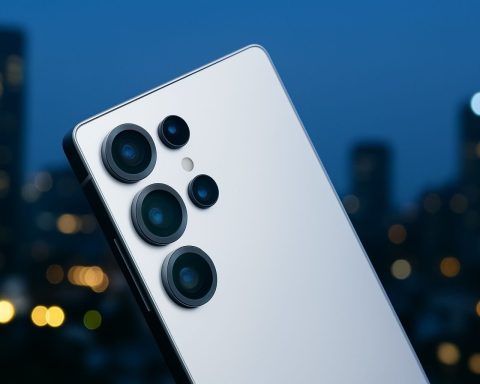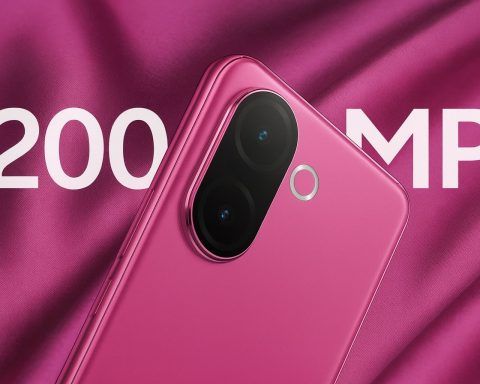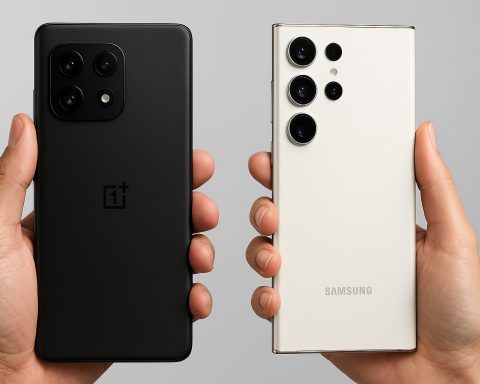- Samsung plans to unveil the Galaxy S26 series in early 2026 at an Unpacked event likely in mid-January or early February, with market availability by late January or early February following the S25’s January 22, 2025 launch.
- The S26 lineup is expected to drop the S26 Plus and introduce a Galaxy S26 Edge to bridge the gap between the base model and the Ultra.
- A GSMA device database leak lists three models—SM-S942 for S26, SM-S947 for S26 Edge, and SM-S948 for S26 Ultra—with SM-S946 (Plus) absent.
- The Galaxy S26 Ultra is rumored to shed thickness to the 7.x mm range from the S25 Ultra’s 8.2 mm, aided by a titanium alloy chassis.
- The S26 Ultra’s rear camera is expected to use a flush P-shaped quad-camera array with no external ring pieces.
- Display details indicate the S26 base will be about 6.1 inches, the S26 Edge ~6.7 inches, and the S26 Ultra ~6.9 inches with a 2960×1440 resolution, and the Ultra reportedly using a CoE OLED panel with a 3rd‑gen anti-reflective coating (CoE+).
- Samsung is said to use a mixed chipset strategy, with Exynos 2600 on some variants (10-core CPU, Xclipse 950 GPU on a 3nm process) and Snapdragon 8 Elite Gen 2 on others, with the Ultra possibly shipping with Snapdragon across all markets.
- RAM and storage are set to rise to 16 GB RAM on Ultra variants, with base models potentially offering 16 GB as an option, and Ultra storage options of 256 GB, 512 GB, and 1 TB, while the base starts at 128 GB and all models use UFS 4.0 or newer.
- The Galaxy S26 Ultra is expected to retain a 5,000 mAh battery, while faster charging is rumored to exceed 45W (potentially up to 65W) with 25W wireless, and a larger vapor chamber cooling system.
- One UI 8 on Android is planned for the S26, likely Android 16, with a Galaxy AI emphasis and potential Perplexity AI integration as a default assistant alongside Bixby and Google Assistant.
Release Date & Lineup Changes
Samsung is expected to unveil the Galaxy S26 series in early 2026, likely at a Galaxy Unpacked event in mid-January or early February [1] [2]. Based on recent patterns (the S25 launched Jan 22, 2025), a similar timeline is anticipated for the S26 lineup. Notably, leaks suggest a major shift in the lineup: regulatory filings and insider reports indicate the Galaxy S26+ model may be dropped altogether [3] [4]. Instead, Samsung appears poised to continue with a new “Galaxy S26 Edge” variant – an ultra-slim device that debuted with the S25 generation – to fill the gap between the base and Ultra models [5] [6]. In a GSMA device database leak, three models were listed (SM-S942, S947, S948 corresponding to S26, S26 Edge, and S26 Ultra respectively) while the expected Plus model (SM-S946) was conspicuously absent [7]. This fuels speculation that Samsung is simplifying its flagship lineup, letting the thin Edge variant replace the Plus for a more streamlined offering [8]. (Samsung hasn’t officially confirmed this move yet, but if no “Plus” appears by launch, it likely means the plan has changed.)
Expected release: If tradition holds, Samsung will host an Unpacked event on a Wednesday in January 2026, with market availability by late January or early February 2026 [9] [10]. All models should launch together, including the standard Galaxy S26, the possible S26 Edge, and the powerhouse S26 Ultra. As for pricing, it’s too early for exact figures, but slight increases are possible given new tech and inflation – though Samsung kept S25 prices flat versus S24, so they may aim to maintain price points if feasible [11] [12].
Design & Display Upgrades
Visually, Samsung isn’t expected to reinvent the wheel for the S26 – early info points to a familiar design language with some subtle but meaningful tweaks. The Galaxy S26 and S26 Edge (or Plus) will likely retain flat screens (6.1-inch for S26, ~6.7-inch for a Plus/Edge) and the contoured minimalist camera module design introduced in recent generations [13] [14]. However, multiple leakers claim Samsung is planning a serious slim-down across the lineup. The Galaxy S26 Ultra, in particular, is rumored to shed bulk, dropping from the S25 Ultra’s ~8.2 mm thickness to a “7.x mm” thin chassis [15] [16] – an impressively slim profile for a flagship with a huge battery. This quest for thinness is reportedly enabled by new internal designs and possibly advanced battery tech (more on that later), and aligns with Samsung’s introduction of the super-thin S25 Edge as a trendsetter. Ice Universe, a renowned Samsung tipster, notes that the S26 Ultra’s reduced thickness will make it feel more in line with the svelte Edge model while still feeling premium and solid [17] [18].
Another design refinement involves the rear camera layout. On the S26 Ultra, Samsung is eliminating the separate camera ring surrounds around each lens [19]. The S25 Ultra had individual metal rings around its cameras (which some criticized as “cheap-looking” add-ons); the S26 Ultra will instead have a flush “P-shaped” quad-camera array with no external ring pieces, improving aesthetics and avoiding past quality control issues with those rings [20] [21]. The chassis material on the Ultra is expected to remain titanium alloy (as used on the S25 Ultra for strength-to-weight benefits), and there’s talk that Samsung might extend the titanium frame to the base S26 or Edge models this year [22] [23]. Build durability (IP68 water/dust resistance) will of course continue standard across the lineup [24].
On the front, Samsung’s displays are already industry-leading, and the S26 family will push that further. Screen sizes should remain roughly the same: the base S26 around 6.1” AMOLED, and the Ultra at 6.9” (2960×1440) – with the Edge likely in between (the S25 Edge had ~6.5-6.6″). The Galaxy S26 Ultra’s display in particular is rumored to get a cutting-edge “CoE” OLED panel with new materials. CoE (Color-filter on Encapsulation) technology replaces the traditional color filter and uses a black PDL (pixel defining layer), resulting in a thinner, lighter screen with higher brightness and efficiency [25] [26]. In essence, CoE OLED can transmit more light with less power, boosting peak brightness and extending battery life [27]. The Ultra is also said to use a 3rd-gen anti-reflective coating (CoE+) to reduce glare outdoors [28]. For users, this means the S26 Ultra’s display could be even more visible under sunlight and slightly more power-efficient than the already excellent S25 Ultra’s screen. Both the S26 and S26 Ultra should still offer Dynamic AMOLED 2X panels with 120Hz adaptive refresh, HDR10+ support, and an ultrasonic in-display fingerprint scanner. We expect QHD+ resolution on the Ultra and FHD+ on the base/Edge models, similar to the previous generation.
Bezels will shrink a bit as well – one leak claims the S26 Ultra has narrower screen bezels than its predecessor, pushing screen-to-body ratios to new highs [29] [30]. Samsung might achieve this by the aforementioned panel tech and possibly slightly flatter front glass. The selfie camera is likely to remain a punch-hole on the S26 and Edge. There was a rumor of an under-display front camera for the S26 Ultra [31] [32], but most experts doubt this will happen in 2026. Under-display cameras (UDC) so far deliver sub-par image quality, and Samsung’s own UDC on the Fold series has been mediocre [33]. Unless there’s a breakthrough, the safer bet is the S26 Ultra sticks with a tiny center hole-punch for the selfie cam (possibly smaller diameter).
In terms of colors and style, not much has leaked yet. For reference, the S25 Ultra came in an array of colors (leaked by analyst Ross Young) including standard Phantom Black, Cream, and some online-exclusives [34]. We can expect Samsung to offer a mix of professional tones (black, silver) and maybe a bold hue or two for the S26 series. The Galaxy S26 Edge, being a fashion-forward model, might feature exclusive colors or finishes. One source suggested Samsung might use the Edge’s design elements (ultra-slim profile, possibly slightly curved “edge” display?) and bring those to the main S26 models [35], but details are scant. For now, count on a premium build quality across all S26 versions and a design that, while not drastically different from the S24/S25, is refined to be sleeker and more ergonomic.
Performance: Snapdragon 8 Elite Gen 2 vs Exynos 2600
Processing hardware is a hot topic for the Galaxy S26 because Samsung’s chipset strategy is in flux. The Galaxy S23 and S25 series relied solely on Qualcomm Snapdragon chips, but multiple reports say Exynos is making a comeback in the S26. Specifically, Samsung’s in-house silicon division has been developing the Exynos 2600 on a 4nm/3nm process, and it could power some S26 models (likely Europe/Asia units) [36] [37]. At the same time, Qualcomm is launching its next flagship chip, the Snapdragon 8 “Elite” Gen 2, by late 2025.
According to SamMobile/Bloomberg, Samsung initially “aimed for Snapdragon-only” for the S26, but is now close to securing the Exynos 2600 for at least some variants [38]. The current expectation is a dual-sourcing strategy: S26 devices in Europe (and possibly other regions) would ship with the new Exynos 2600, while North America, China and others get the Snapdragon 8 Elite Gen 2 [39]. This would mirror pre-2023 practices, albeit with hopefully a smaller performance gap than older Exynos generations. Ice Universe has corroborated the likelihood of an Exynos/Snapdragon split for the S26 series [40]. Notably, S26 Ultra might be an exception – one tipster claims the Ultra will use Snapdragon across all markets, painting “a bleak picture” for Exynos 2600’s role [41] [42]. It’s possible Samsung trusts Qualcomm for its top-tier Ultra to ensure no compromises, while Exynos 2600 (if ready) could be used in the standard S26 (and maybe Edge) in select regions. Samsung’s official stance is unknown, but they did confirm they’re “steadily preparing Exynos 2600” for future flagships [43].
As for the chips themselves, Qualcomm’s Snapdragon 8 Elite Gen 2 (the naming is new – essentially the successor to 2024’s Snapdragon 8 Gen 3) is rumored to be a 3nm monster. It will feature Qualcomm’s custom Oryon CPU cores in a 2+6 configuration (dropping the 1 “prime” core design) and an Adreno 840 GPU [44]. Early leaks suggest a big performance leap – possibly clock speeds up to ~5.0 GHz on the big cores [45] – that could “obliterate” previous gen scores [46]. Qualcomm has scheduled the chip’s unveiling for September 2025 [47], giving Samsung a few months to integrate it. There is also talk of a Galaxy-optimized variant built on Samsung’s 2nm process, but that 2nm version (sometimes dubbed “Snapdragon 8 Elite 3 for Galaxy”) may have been cancelled or delayed past the S26 timeframe [48] [49]. Most likely, the S26 series will use the TSMC-made 3nm Snapdragon 8 Elite Gen 2, potentially with a slight Samsung “for Galaxy” overclock in the CPU/GPU [50]. This chip will deliver top-of-the-line Android performance and 5G capabilities. We can expect faster AI processing, improved power efficiency, and support for new camera features (e.g. 8K video improvements, etc.) from Qualcomm’s latest ISP and NPU in the SoC.
Meanwhile, the Exynos 2600 is somewhat more mysterious but has leaked specs: it’s reportedly a 10-core CPU design (1+4+5 configuration) using ARM’s latest cores (Cortex-X925 at ~3.3GHz, Cortex-A7xx combos) and a Xclipse 950 GPU based on AMD’s RDNA 3.5 architecture [51] [52]. It’s built on Samsung Foundry’s advanced 3nm Gate-All-Around process [53]. Samsung has hinted that Exynos 2600 will be a major upgrade, focusing on AI and efficiency over the ill-fated Exynos 2400/2500 series. In fact, Exynos 2500 was skipped for the S25 (used instead in the Z Flip 7) [54] [55], possibly giving Samsung more time to perfect the 2600 for the S26. If the Exynos 2600 does make it into the S26 (likely in the standard model), Samsung fans will be watching closely to see if it can match the Snapdragon variant’s performance and thermal output. Samsung is reportedly optimizing the chip heavily and aiming to secure its design wins in late 2025 phones [56] [57].
Memory and storage in the S26 series are set to receive a bump. The Galaxy S25 base models shipped with 12GB of RAM (up from 8GB in S24) [58] [59], and now 16GB RAM could become the new standard for the S26 lineup [60]. In fact, a recent leak suggests Samsung will equip all Galaxy S26 Ultra variants with 16GB LPDDR5X/5T RAM [61] [62], and possibly even the base S26 might offer a 16GB option to keep up with rivals [63]. Storage options should mirror S25: 256GB, 512GB, and 1TB on the Ultra (with 128GB likely starting on the base model) [64] [65]. No microSD slot is expected (Samsung hasn’t brought that back in recent S series). The S26 Ultra leak lists 256GB as the base storage paired with 16GB RAM [66] – a generous combo – and all models should use UFS 4.0 or newer storage tech for blazing read/write speeds.
To keep things cool, Samsung is reportedly upgrading the thermal management. The S26 Ultra will feature a vapor chamber 1.2× larger than the S25 Ultra’s cooling plate [67] [68]. This 120% size increase in the vapor chamber should help the Snapdragon 8 Elite Gen2 (or Exynos) sustain peak performance longer without throttling [69]. Heat dissipation is crucial, especially if Samsung pushes frame rates or on-device AI processing. Combined with the power efficiency gains of the 3nm chips, this could make the S26 Ultra a powerhouse that’s cooler under load than its predecessors.
One quirk from the S25 Ultra: Samsung removed Bluetooth from the S Pen to save internal space and weight, disabling remote camera shutter and other BLE S-Pen tricks [70]. Fans weren’t thrilled, and there is hope Samsung might restore full Bluetooth S Pen functionality in the S26 Ultra. TechAdvisor notes it’d be nice to see the Bluetooth S Pen from the S24 Ultra make a return after S25’s less-functional stylus [71]. So far, leaks say the S26 Ultra will indeed still include an S Pen (built-in silo) and the classic Wacom digitizer, but likely “without Bluetooth” again [72] [73]. Samsung apparently tested an S Pen without a dedicated digitizer (to maybe detach it or free space) but got poor results, so the traditional integrated stylus experience will remain [74]. That said, one rumor suggests Samsung is exploring a change in S Pen tech to accommodate Qi2 wireless charging magnets in the phone (Qi2 uses magnets like MagSafe) [75]. It’s unclear if this will debut in S26, but if Samsung adds Qi2 magnetic alignment for wireless charging, they might need to tweak the internal layout around the S Pen slot.
In summary, the S26 series should be extremely powerful: whichever chip you get (Snapdragon or Exynos), it will be cutting-edge 2025/2026 silicon with improved AI capabilities. Multi-tasking will be a breeze with 12–16GB RAM, and storage is plentiful. Early signs point to Samsung focusing on refinement over revolution here – ensuring stable, cool performance and no shortage of horsepower [76] [77], rather than chasing higher benchmark core counts at the expense of efficiency.
Camera Upgrades: Bigger Sensors & Better Zoom
Samsung’s Galaxy S Ultra phones are known for pushing camera boundaries, and the Galaxy S26 Ultra is shaping up to continue that trend with a few noteworthy upgrades. Perhaps the most exciting leak is that Samsung might adopt a huge new main sensor on the Ultra: a Sony-made 200MP sensor of size 1/1.1″ [78] [79]. This rumor, originating from a Chinese leaker (Fixed Focus Digital on Weibo), says Samsung is testing a Sony 200MP CMOS for the S26 Ultra – a departure from using its in-house ISOCELL sensors [80]. At 1/1.1-inch, this sensor would be significantly larger than the 1/1.3″ ISOCELL HP2 used in the last three Galaxy Ultras [81], which could dramatically improve light capture and image quality. Larger sensor = better low-light performance and natural depth of field, addressing areas where Samsung has trailed rivals like Xiaomi, Oppo, and Vivo with their 1″ sensors [82] [83].
However, there is a catch – some insiders caution that Samsung might delay this big sensor upgrade to the S27 Ultra if it’s not ready in time [84]. In fact, earlier reports suggested Samsung wasn’t planning a major camera jump until 2027–2028, focusing on software in the interim [85]. So, we have conflicting rumors: one camp (via Weibo and GSMArena) says the S26 Ultra could get the new Sony 200MP sensor in January 2026 [86] [87], while another suggests Samsung might stick with the current 200MP ISOCELL HP2 sensor for one more year [88] [89]. A recent tip from @PandaFlashPro claimed the S26 Ultra will retain the ISOCELL HP2 200MP sensor (1/1.3″) but possibly use a new lens and updated pixels for improved results [90] [91]. This would mean the main camera specs (200MP, f/1.7 aperture, etc.) stay the same on paper, but Samsung tweaks the optics and processing (the leak mentions an updated “Pro Visual Engine” ISP for better HDR, autofocus, etc. [92] [93]). On the other hand, the Sony 200MP 1/1.1″ rumor is gaining traction in mid-2025 as a potential surprise upgrade if Samsung can pull it off [94] [95]. We may not know which path Samsung chose until closer to launch, but either way, expect the S26 Ultra’s primary camera to be 200MP with improved image quality – either through a physically larger sensor or incremental refinements.
Beyond the main camera, telephoto upgrades are in store. Samsung has famously used a 10MP 3× telephoto camera since the Galaxy S21 series (for portraits and mid-range zoom) – essentially unchanged for years. Leakers say the Galaxy S26 Ultra will finally bump the 3× tele shooter from 10MP to a 12MP sensor [96] [97]. It’s a modest resolution uptick, but coupled with likely a slightly larger sensor, it should yield sharper 3x zoom shots and better low-light portraits. Ice Universe and others note Samsung’s 10MP 3x lens was overdue for an update, so this is a welcome change [98] [99]. Meanwhile, the periscope zoom lens on the Ultra is expected to remain at 5× optical zoom (rather than 10×) with a high-resolution sensor. The Galaxy S25 Ultra already switched to a 50MP 5× periscope camera (dropping the older 10×/10MP module in favor of a shorter 5× optical with cropping for 10×) – and the S26 Ultra will likely use a similar approach. Leaks say the S26 Ultra’s periscope will stay 50MP, 5x optical [100] [101]. Some early tech chatter even suggested Samsung might experiment with an ultra-high-res telephoto: TechAdvisor mentions a possible 200MP periscope lens up from 50MP [102] [103], but clarifies that Samsung would only use one 200MP sensor (not two), so it’s unclear if that was speculation about the main vs tele. It seems more likely the main stays 200 and tele stays 50, rather than two 200MP cameras on one phone (which would be overkill and very costly). So, in summary, the S26 Ultra’s expected rear camera setup is: 200MP main (either ISOCELL HP2 or new Sony), 50MP ultra-wide (likely 0.5× FoV, similar to S25 Ultra’s 12MP or 50MP – some reports say Samsung might upgrade the Ultra-wide to 50MP [104]), 50MP 5× periscope tele, and a 3× tele (testing 12MP)】 [105]. That’s a quad-camera system, plus a new laser autofocus module to bolster focusing speed [106] [107].
The Galaxy S26 and S26 Edge (non-Ultra models) will have a more modest camera arrangement, but still high-end for their class. Typically, the base and plus models carry a triple camera: 50MP main, 12MP ultrawide, and ~10MP 3x telephoto. We haven’t heard of major changes to these in leaks (Samsung often reuses sensors for a couple of generations on the non-Ultras). The S26/S26+ main camera is expected to stick to 50MP, but possibly a newer sensor replacing the aging ISOCELL GN3 used in S22–S25. Rumors suggest Samsung might use an upgraded ISOCELL GN-series sensor with similar resolution but better tech [108]. Interestingly, one rumor hints at variable aperture coming to the regular S26’s main camera [109] [110]. Samsung hasn’t done variable aperture since the Galaxy S9’s dual-aperture lens, but new implementations (like Xiaomi’s 14 Ultra) allow the camera to adjust aperture for improved low-light vs daylight performance. If the S26 base model gets a multi-step aperture on its 50MP lens, it could enhance versatility – e.g. an f/1.4 setting for night and f/2.4 for sharp daylight shots. This is speculative but would be a cool differentiator if true. The ultrawide on S26 should remain around 12MP and the telephoto 3× around 10MP (unless Samsung decides to trickle down a 12MP module here too). We haven’t heard of under-display selfie cameras for the base models at all, so expect the usual 12MP front camera punch-hole.
In terms of camera software and features, Samsung will continue building on its strong foundation. The S25 series already introduced smart software tricks: 10-bit HDR video capture, improved Night Mode processing, and new editing tools like Audio Eraser for removing background noise in videos [111] [112]. The S26 series will likely bring further enhancements via the new “Galaxy Pro Visual Engine” – Samsung’s marketing name for its on-device AI image processing pipeline [113] [114]. Leaks mention the S26 Ultra’s Pro Visual Engine enabling things like faster autofocus, better motion capture, multi-frame noise reduction, and even 4K@120fps slow-motion video support [115]. Standard 8K video recording at 30fps will continue (with the powerful ISP, maybe even 8K/60 if thermals allow, though no rumor confirms 8K60). There’s talk that LOG format video will still be supported for pros (as on S25 Ultra) [116]. Samsung is also said to be focusing on local AI processing for photography, meaning more of the scene recognition, Nightography, and HDR processing could be done on-device (leveraging those beefy NPUs) rather than cloud, for speed and privacy [117] [118].
An interesting note: despite slimmer phones, Samsung may have found a way to use thinner camera lens modules without sacrificing quality. One report claims the lens elements across the S26 range will be thinner, possibly reducing the camera bump depth [119]. If Samsung manages to make the camera hump on the S26 Ultra less pronounced (even with big sensors), that would be a welcome improvement in hand feel. The use of new materials or folded optics could help here.
Expert commentary: Camera analysts are optimistic. Ice Universe has hinted that while the battery and sensor might not jump hugely, the 3× telephoto upgrade and thinner design are “finally” coming after years of requests [120] [121]. And if the Sony sensor materializes, it could be a game-changer: for Samsung to adopt a Sony 200MP would signal a shift to a more hardware-driven camera strategy (Samsung historically relied on its smaller sensors plus heavy processing) [122]. This could help Samsung “regain momentum in smartphone imaging” and better compete with the likes of Xiaomi 15 Ultra or Oppo Find X8 which use 1″ sensors [123]. On the flip side, if Samsung sticks with the existing sensor, some enthusiasts might be disappointed by another year of iterative camera hardware. But even then, the combination of smaller improvements – a new lens coating, slightly higher telephoto resolution, and advanced software – should yield noticeable photography gains over the S25 Ultra. The bottom line: expect sharper zoom shots, faster focus, and improved low-light imaging on the S26 Ultra, even if the headline specs (200MP, etc.) seem similar on paper [124] [125]. And for the base S26 models, Samsung will refine the already solid triple-camera setup, potentially bringing features like variable aperture to enhance versatility [126].
Battery Life & Charging
Battery capacity has been one of the few areas where Samsung played it safe in recent years – the S25 Ultra stuck with 5,000mAh, and the smaller S25 had just 4,000mAh (S25+ got 4,900mAh) [127] [128]. Fans have been clamoring for larger batteries, and Samsung might finally answer with the S26 series. Rumors suggest Samsung is working on next-gen battery tech for these phones, including stacked battery designs and even silicon-carbon anode batteries to boost capacity without increasing size [129] [130]. One report claims Samsung’s battery R&D team has been testing “stacked” battery cells (a technique borrowed from EVs) which can pack cells more densely [131]. Another exciting rumor – albeit unconfirmed – is that the Galaxy S26 series could introduce silicon-carbon battery chemistry [132] [133]. Silicon-carbon batteries can achieve higher energy density than current lithium packs, potentially allowing, say, a 6,000mAh+ cell in the same volume. Chinese competitors like OnePlus and Honor are already exploring these technologies, and Samsung doesn’t want to fall behind [134] [135].
That said, industry watchers urge caution: Samsung has been rumored to adopt battery breakthroughs for years without it materializing yet [136]. It’s very possible the S26 sticks to more traditional battery tech. In fact, one insider report suggests Samsung may ultimately cap the S26 Ultra’s battery around 5,500mAh at most, even if using new chemistry [137] [138]. And if silicon-carbon isn’t ready for mass production, Samsung might instead implement smaller design optimizations – for example, using stainless steel battery housings and redesigned protection circuits that free up a bit of space for extra capacity [139]. These could allow maybe a few hundred mAh more without changing the overall dimensions. Leaked info from Korean sources indicates Samsung is experimenting with such space-saving internal structures, though any gains might be minor [140].
For now, the most concrete leak is that the Galaxy S26 Ultra will keep a 5,000mAh battery – the same capacity as S23/S24/S25 Ultra [141] [142]. This might initially sound disappointing (since competitors are edging towards 5,500–6,000mAh in flagships). However, Samsung is reportedly optimizing the battery’s chemistry and software to improve real-world endurance [143] [144]. The S26 Ultra’s battery is said to be “significantly optimized” in longevity and safety, even if the spec sheet still says 5000mAh [145] [146]. Ice Universe noted that Samsung remains cautious due to the Galaxy Note7’s infamous battery incident years ago – they won’t push capacity too far without absolute confidence in safety [147]. To that end, Samsung has improved the S26 battery’s safety layers and lifespan. The company is likely using upgraded battery protection units, and the new Snapdragon/Exynos chips plus CoE display will all contribute to lower power draw. The net effect could be an improvement in battery life despite the similar capacity. One source speculated Samsung’s internal testing shows enough efficiency gains that they preferred to make the phone thinner rather than just stuffing a bigger battery [148] [149]. This aligns with the design priority on slimness – Samsung appears to be betting that a well-optimized 5000mAh can get the job done, especially if charging is faster to top-up quickly.
Speaking of charging, Samsung may finally upgrade its charging speeds on the S26 series – a long-awaited catch-up to Chinese rivals. The S25 Ultra maxed out at 45W wired and 15W wireless (same as S23 Ultra), which lags competitors offering 65W, 80W, even 100W+. Rumors are saying the Galaxy S26 Ultra will exceed 45W charging for the first time [150] [151]. Ice Universe teased that something “speedier” than 45W is coming, though he didn’t specify the wattage [152]. Even a bump to 65W would be a big improvement, likely cutting the full charge time to under 30 minutes for the Ultra’s battery. Samsung has been conservative here due to battery lifespan concerns, but with enhanced battery safety tech and perhaps pressure from the market, they seem ready to inch up. Tech enthusiasts are hoping for at least 65W wired charging to match phones like Xiaomi and OnePlus, and maybe an increase in wireless charging to 25W. At minimum, expect faster charging speeds on S26 Ultra than the 45W/15W we’re used to [153].
To ensure faster charging doesn’t degrade the battery, Samsung is likely incorporating smarter charging algorithms. The S26’s battery improvements reportedly focus on maintaining lifespan even with quicker top-ups [154] [155]. This could involve advanced battery health management in One UI (like adaptive charging that learns your routine) and perhaps new cooling solutions (the enlarged vapor chamber will help dissipate heat during fast charging too [156]). In other words, Samsung wants to avoid the scenario where faster charging = faster battery wear. If they’re increasing wattage, they’ll do so in a way that keeps battery longevity solid – likely one reason they didn’t rush to 65W earlier.
The base Galaxy S26 and Edge may also see a battery bump. With no Plus model, Samsung might give the regular S26 a slightly larger battery than 4,000mAh (perhaps ~4,500mAh) to make it more appealing [157]. The model number change (SM-S942 instead of S941) hinted that the base S26 could be more “advanced” – possibly referring to a spec uplift like battery or screen size [158]. If stacked cells or other tech come through, even the compact S26 could surprise us with notably better battery life than the S25 did. The S26 Edge, being ultra-thin, will likely prioritize form over capacity, but Samsung may use the latest packaging techniques to maximize what fits in that slim frame. For instance, the S25 Edge had to compromise on battery a bit due to its thinness (reportedly around 4,300mAh), but the S26 Edge might use a multi-layered cell design to keep decent capacity while staying slim.
In summary, battery and charging on the S26 series look to improve in quality if not drastically in quantity. The Ultra is expected to hold at 5000mAh but with much faster charging (possibly ~50–65W range) [159] and better longevity optimizations. The standard S26 could see a moderate battery size increase especially if Plus is gone, and perhaps also slightly faster charging (Samsung might bump the base model from 25W to something higher, though no leak confirmed base model wattage yet). Wireless charging will support the latest Qi2 standard – Samsung is part of the Qi2 initiative, and leaks say the S26 will support Qi2 magnetic alignment (likely with an add-on case) [160] [161]. This means easier snap-on wireless chargers and potentially more efficient wireless charging. Reverse wireless power share will of course be present to charge your Galaxy Buds or Watch.
To temper expectations: one insider did warn that even with new tech, the S26 Ultra’s battery might “disappoint once again” in raw capacity [162] [163] – implying those hoping for a giant 6000mAh cell may not get that. But real-world endurance could still improve thanks to efficiency gains. If Samsung truly implements the silicon-carbon or stacked batteries, we could be pleasantly surprised with battery sizes (that’s the scenario where 6000mAh Ultra or 5000mAh base aren’t impossible) [164]. For now, lean on the conservative side: 5000mAh in Ultra, ~4500mAh in Edge, ~4200-4500mAh in base S26 (if they up it), with charging finally catching up to modern standards.
Software & AI: One UI 8 with a New AI Assistant?
On the software front, the Galaxy S26 lineup will ship with Samsung’s latest One UI software on top of Android. By early 2026, that will likely be Android 16 (expected to release in late 2025) or possibly Android 15 if there are delays. Samsung is already previewing One UI 8.0 as the next major update [165], and the S26 series will debut this version. One UI 8 is expected to bring a wave of AI-powered features and integrations, aligning with the industry’s focus on generative AI. In fact, Samsung has been explicitly pushing a “Galaxy AI” initiative, and insiders say the S26 family will heavily emphasize on-device AI capabilities [166] [167]. This could include smarter camera AI (as mentioned), personalized voice assistants, and new intelligent recommendations in the UI.
One of the biggest potential changes is the introduction of a new AI assistant/search tool from Perplexity AI. According to Bloomberg’s Mark Gurman, Samsung is nearing a deal with Perplexity AI – a startup known for its AI Q&A and search assistant – to integrate its technology into Galaxy devices [168] [169]. Samsung is even considering a strategic investment in Perplexity and could announce the partnership later this year [170]. If the deal goes through, the Galaxy S26 could come preloaded with Perplexity’s AI app and make it the default AI assistant, augmenting or even replacing some functions of Google Assistant (Gemini) and Bixby [171] [172]. Essentially, Samsung might provide a multi-AI experience: imagine being able to ask your phone complex questions or generate content using Perplexity’s AI, directly integrated into One UI. They’ve discussed integrating Perplexity into Bixby voice assistant and the Samsung Internet browser as well [173]. This would be a bold move, reducing Samsung’s reliance on Google’s upcoming Gemini AI and differentiating Galaxy phones with a unique AI assistant that competes with ChatGPT and Siri [174] [175].
Samsung has branded its AI push as “Galaxy AI” or “Awesome AI” internally [176]. With One UI 7 (on the S25), they integrated more of Google’s AI (the S25 were marketed as “AI phones” with deeper Google Assistant and on-device ML). For One UI 8 on the S26, if Perplexity is on board, we could see features like: an AI chatbot that can summarize your emails or messages, AI-generated travel itineraries in Samsung’s Planner app, smarter widgets that converse with you, or an “AI Companion” hub on the home screen (some concept images even showed a widget labeled “A true AI companion” on a Galaxy phone). Samsung also hinted at “AI agents” that work across apps [177] – for example, an AI that can act on your behalf to book tickets or compose a document, possibly leveraging Perplexity’s conversational search fused with Samsung’s app ecosystem.
It’s worth noting that nothing is official yet – Samsung’s talks with Perplexity are not finalized and “could go either way” [178]. But multiple outlets (TechRadar, Android Central) have reported on this, and even Apple has eyed Perplexity for Siri [179]. If it happens, the Galaxy S26 would effectively launch with two voice assistants: Bixby (which could be enhanced by Perplexity under the hood) and the option of Google Assistant. Samsung might allow users to choose their default, or use Perplexity more for text/image generation queries and Bixby for device controls. This would be a landmark shift – imagine asking your Galaxy S26 Ultra a complex question and getting a detailed, sourced answer from Perplexity’s engine, right on your home screen. It could also integrate with the new “Galaxy AI” app or hub that Samsung has been developing [180].
Beyond the AI assistant, One UI 8 will likely introduce refinements in customization and continuity across Samsung devices. Samsung’s ecosystem integration (phone to tablet to PC) will get smarter, possibly with AI predicting when to switch audio to your Galaxy Buds or suggesting to open an app on your Galaxy Book laptop. Security and privacy will remain top-notch, with Samsung Knox protecting local AI data. The S26 series will also launch with the latest security enhancements and ship with a promise of 4 generations of Android OS updates (as Samsung currently provides), meaning it would get updates through Android 20 and security patches for five years.
There is also buzz about One UI 8 enabling a new form factor – Samsung teased a “tri-fold” device in One UI 8 code [181] – though that’s more for the Fold lineup, it shows Samsung is forward-looking in software. For the S26, we might see hints of future AR/VR integration or support for new accessories (like the rumored Galaxy Ring wearable) within the OS.
Additionally, with the hardware supporting Wi-Fi 7 and satellite connectivity, One UI 8 will bring the interfaces for those. Leaks confirm the S26 Ultra will support Wi-Fi 7 for faster wireless networking [182], and likely Satellite SOS messaging (a trend started by Apple and Qualcomm’s Snapdragon Satellite). Samsung partnered with satellite communication providers for the S24, so by S26 we expect a full satellite emergency texting feature baked into One UI (for regions that allow it).
Expert voices: TM Roh, Samsung Mobile’s chief, has spoken about making Galaxy phones “intelligent companions” and indicated Samsung is investing in on-device AI strongly. The inclusion of a Perplexity AI-based system would underscore that. Mark Gurman at Bloomberg reported Samsung’s potential Perplexity deal as a direct play to “reduce reliance on Google’s AI” and create a more independent ecosystem [183]. Industry analysts view this as Samsung hedging its bets – similar to how they maintain multiple suppliers for hardware, they want multiple AI partners for software. Eddy Cue of Apple even noted Apple was impressed with Perplexity’s tech [184], which shows it’s a significant player in AI search. For Samsung to potentially beat Apple to integrating that kind of AI could be a big win.
All told, the Galaxy S26 series’ software will emphasize AI, personalization, and performance. From voice assistants that truly converse, to camera AI that edits photos like a pro, to UI that adapts to your needs, Samsung is aiming to make these phones feel smarter than ever. Of course, they will still run Android at heart, with all the Google services and millions of apps at your disposal. But the difference may be that your Galaxy can do more for you out-of-the-box (write emails, plan schedules, answer complex questions) thanks to new AI features baked into One UI 8 [185] [186]. It’s a fascinating direction that could make the S26 lineup not just an iterative hardware upgrade, but a significant software experience upgrade as well.
The Bottom Line: How the S26 Compares & What to Expect
The Galaxy S26 lineup appears to be more about polish and strategic upgrades rather than wild gimmicks – a trend of refinement building on the S24/S25 foundation. Compared to the Galaxy S25 series, the S26 family is slimmer, smarter, and a bit more ambitious:
- Versus Galaxy S25 Ultra: The S25 Ultra was already a beast with a 200MP camera and Snapdragon 8 Gen 3. The S26 Ultra will refine that with a possible new 200MP sensor (or improved lens) that could markedly boost image quality [187] [188]. It keeps the same battery capacity, but promises faster charging and better cooling, addressing two common asks [189] [190]. The design is largely the same, but small changes like no camera rings, a slightly thinner titanium frame, and a next-gen OLED make it feel more modern [191] [192]. In short, S26 Ultra isn’t a radical redesign of S25 Ultra – it’s more an iterative upgrade focused on fixing pain points (charging speed, camera consistency, device thickness) while adding new AI capabilities. As one report put it, “you won’t find a revolution in the Galaxy S26 Ultra… but you will find everything you love and a little more” [193].
- Versus Galaxy S25/S25+: The standard S25 and S25+ were solid but conservative updates, still using a 50MP GN3 sensor and 25W charging. The S26 (and its possible Edge variant) aim to step up the specs to compete better with rivals. We expect the base S26 to get a newer 50MP main sensor (with variable aperture) [194] [195], potentially delivering better photos than the last three generations of 50MP Galaxy cameras. The RAM might jump to 16GB in higher trims, whereas S25 capped at 12GB [196]. And if Samsung uses Exynos 2600 in the S26, it will be interesting to see how it stacks up against the Snapdragon 8 Gen 2 used in S25 – Samsung will need to prove its chip is equal or better to avoid the criticism of past Exynos models. On the plus side, the S26 should benefit from all the cross-model improvements: slightly bigger battery (if Plus is gone, base might inherit a bit larger battery), faster charging, and the new AI software features. The removal of the Plus model itself is a comparison point: it indicates Samsung noticed Galaxy S25+ sales lagged and that consumers gravitate to either the best-of-best Ultra or the value base model [197]. So for S26, Samsung is tailoring its offerings more sharply – a strategy shift that could be seen as Samsung learning from S24/S25 sales data.
- Generational Shifts: If we look back to the Galaxy S24 (2024), which introduced things like an earlier form of Exynos 2400 in some regions and incremental design changes, the S26 is a leap forward in some regards. For one, AI integration is far beyond what S24/S25 had – those older models largely relied on Google’s stock Assistant, whereas S26 is likely to have a whole new AI ecosystem built-in [198] [199]. The display tech (CoE panels) and materials (titanium) being used in S26 Ultra also mark an evolution from the glass/Armor Aluminum and conventional AMOLED of S24 Ultra.
- Competitive landscape: By 2026, competitors (like iPhone 17 series and Google’s Pixel 10) will also be focusing on AI and camera. Samsung’s move to possibly use a Sony sensor is actually aligning with how Chinese brands have done (large Sony sensors) [200], and the rumored 200MP periscope (if it ever happened) would leapfrog any zoom camera on the market. It shows Samsung is trying not to fall behind in the camera arms race. Meanwhile, faster charging and bigger batteries are a response to Chinese flagships that often tout 100W charging and 5000+mAh cells. In many ways, the S26 is Samsung playing catch-up on hardware (charging, battery tech) while pushing ahead on software (AI, long support updates).
Final thoughts: Samsung hasn’t officially revealed the Galaxy S26 lineup yet, but the picture painted by leaks is quite comprehensive. We’re looking at three devices that refine Samsung’s formula: the standard Galaxy S26 (the compact yet powerful option, possibly beefed up without a Plus sibling), a Galaxy S26 Edge (super-thin, stylish, bridging the gap), and the Galaxy S26 Ultra (the no-compromise flagship). Expect the Ultra to grab headlines with that 200MP multi-camera system and AI features, but the base models should not be underestimated – they are inheriting many flagship traits and could even see unexpected boosts like variable aperture cameras or higher RAM. Samsung appears to be listening to feedback (“give us faster charging, bigger batteries, better zoom”) and addressing it, all while adding a unique twist with the Perplexity AI integration and renewed Exynos chips.
As always, until Samsung takes the stage, these details remain rumors and leaks – some may change or not pan out. But given the sources (analysts like Ice Universe, Bloomberg, supply chain leaks) and Samsung’s own patterns, this is a compelling preview of the Galaxy S26 series. If all comes true, the S26 lineup will offer a tantalizing blend of cutting-edge tech (3nm chips, AI assistants, new OLED displays) and practical improvements (finally faster charging, refined design). Samsung’s 2026 flagships could very well set a new benchmark for Android phones, marrying the company’s hardware prowess with a bold new foray into AI-driven software [201] [202]. Keep an eye out as more leaks firm up in the coming months – and mark your calendar for that likely January 2026 Unpacked event, where Samsung will officially unleash what is shaping up to be one of its most advanced Galaxy S generations yet.
Sources: The information above is compiled from credible leaks and reports, including TechRadar [203] [204], PhoneArena [205] [206], NotebookCheck [207] [208], Wccftech [209] [210], Android Headlines [211] [212], SamMobile/Bloomberg [213] [214], and noted tipsters like Ice Universe and Fixed Focus Digital [215] [216]. These sources provide a glimpse into Samsung’s plans for the Galaxy S26, though final specifications may vary when the official announcement is made. We will update this report as more confirmed details emerge.
References
1. www.phonearena.com, 2. www.phonearena.com, 3. www.techradar.com, 4. sammypolice.com, 5. www.techradar.com, 6. sammypolice.com, 7. sammypolice.com, 8. sammypolice.com, 9. www.phonearena.com, 10. www.phonearena.com, 11. www.techadvisor.com, 12. www.techadvisor.com, 13. www.phonearena.com, 14. www.phonearena.com, 15. 9to5google.com, 16. www.androidauthority.com, 17. 9to5google.com, 18. www.androidauthority.com, 19. www.androidheadlines.com, 20. wccftech.com, 21. www.androidheadlines.com, 22. www.techadvisor.com, 23. www.techadvisor.com, 24. www.androidheadlines.com, 25. samlover.com, 26. samlover.com, 27. samlover.com, 28. samlover.com, 29. www.androidheadlines.com, 30. www.androidheadlines.com, 31. www.phonearena.com, 32. www.techadvisor.com, 33. www.techadvisor.com, 34. www.tomsguide.com, 35. www.phonearena.com, 36. www.sammobile.com, 37. www.techadvisor.com, 38. www.sammobile.com, 39. www.sammobile.com, 40. www.sammobile.com, 41. wccftech.com, 42. wccftech.com, 43. www.sammyfans.com, 44. www.sammobile.com, 45. www.youtube.com, 46. wccftech.com, 47. www.sammobile.com, 48. www.sammobile.com, 49. www.androidheadlines.com, 50. www.androidheadlines.com, 51. www.sammobile.com, 52. www.sammobile.com, 53. www.sammobile.com, 54. www.sammobile.com, 55. www.sammobile.com, 56. www.androidauthority.com, 57. www.sammobile.com, 58. www.phonearena.com, 59. www.phonearena.com, 60. www.phonearena.com, 61. wccftech.com, 62. wccftech.com, 63. www.phonearena.com, 64. www.phonearena.com, 65. wccftech.com, 66. wccftech.com, 67. wccftech.com, 68. www.androidheadlines.com, 69. wccftech.com, 70. wccftech.com, 71. www.techadvisor.com, 72. www.notebookcheck.net, 73. www.notebookcheck.net, 74. www.androidheadlines.com, 75. 9to5google.com, 76. www.androidheadlines.com, 77. www.androidheadlines.com, 78. www.notebookcheck.net, 79. www.notebookcheck.net, 80. www.notebookcheck.net, 81. www.notebookcheck.net, 82. www.notebookcheck.net, 83. www.notebookcheck.net, 84. www.notebookcheck.net, 85. www.notebookcheck.net, 86. www.techradar.com, 87. www.techradar.com, 88. www.notebookcheck.net, 89. www.notebookcheck.net, 90. wccftech.com, 91. www.notebookcheck.net, 92. www.notebookcheck.net, 93. www.notebookcheck.net, 94. www.notebookcheck.net, 95. www.techradar.com, 96. www.androidauthority.com, 97. www.androidauthority.com, 98. www.androidauthority.com, 99. www.androidauthority.com, 100. www.notebookcheck.net, 101. www.androidheadlines.com, 102. www.techadvisor.com, 103. www.techadvisor.com, 104. www.notebookcheck.net, 105. www.androidheadlines.com, 106. wccftech.com, 107. www.androidheadlines.com, 108. www.techadvisor.com, 109. www.techadvisor.com, 110. www.techadvisor.com, 111. www.phonearena.com, 112. www.phonearena.com, 113. www.notebookcheck.net, 114. www.notebookcheck.net, 115. www.notebookcheck.net, 116. www.notebookcheck.net, 117. www.notebookcheck.net, 118. www.notebookcheck.net, 119. www.techadvisor.com, 120. www.androidauthority.com, 121. www.androidauthority.com, 122. www.notebookcheck.net, 123. www.notebookcheck.net, 124. www.androidheadlines.com, 125. www.androidheadlines.com, 126. www.techadvisor.com, 127. www.phonearena.com, 128. www.phonearena.com, 129. www.phonearena.com, 130. www.phonearena.com, 131. www.phonearena.com, 132. www.phonearena.com, 133. www.phonearena.com, 134. www.phonearena.com, 135. www.phonearena.com, 136. www.phonearena.com, 137. www.techadvisor.com, 138. www.techadvisor.com, 139. www.techadvisor.com, 140. www.techadvisor.com, 141. wccftech.com, 142. www.notebookcheck.net, 143. www.notebookcheck.net, 144. www.notebookcheck.net, 145. www.notebookcheck.net, 146. 9to5google.com, 147. 9to5google.com, 148. www.androidauthority.com, 149. www.androidauthority.com, 150. 9to5google.com, 151. 9to5google.com, 152. 9to5google.com, 153. 9to5google.com, 154. 9to5google.com, 155. 9to5google.com, 156. wccftech.com, 157. sammypolice.com, 158. sammypolice.com, 159. 9to5google.com, 160. www.notebookcheck.net, 161. samlover.com, 162. www.notebookcheck.net, 163. www.notebookcheck.net, 164. www.phonearena.com, 165. samlover.com, 166. www.phonearena.com, 167. www.notebookcheck.net, 168. www.sammobile.com, 169. www.sammobile.com, 170. www.sammobile.com, 171. www.sammobile.com, 172. www.sammobile.com, 173. www.sammobile.com, 174. www.sammobile.com, 175. www.sammobile.com, 176. www.sammobile.com, 177. www.sammobile.com, 178. www.sammobile.com, 179. www.sammobile.com, 180. www.sammobile.com, 181. 9to5google.com, 182. www.notebookcheck.net, 183. www.sammobile.com, 184. www.sammobile.com, 185. www.phonearena.com, 186. www.sammobile.com, 187. www.notebookcheck.net, 188. www.notebookcheck.net, 189. 9to5google.com, 190. wccftech.com, 191. wccftech.com, 192. samlover.com, 193. www.androidheadlines.com, 194. www.techadvisor.com, 195. www.techadvisor.com, 196. www.phonearena.com, 197. sammypolice.com, 198. www.sammobile.com, 199. www.sammobile.com, 200. www.notebookcheck.net, 201. www.phonearena.com, 202. www.sammobile.com, 203. www.techradar.com, 204. www.techradar.com, 205. www.phonearena.com, 206. www.phonearena.com, 207. www.notebookcheck.net, 208. www.notebookcheck.net, 209. wccftech.com, 210. wccftech.com, 211. www.androidheadlines.com, 212. www.androidheadlines.com, 213. www.sammobile.com, 214. www.sammobile.com, 215. www.androidauthority.com, 216. www.notebookcheck.net
